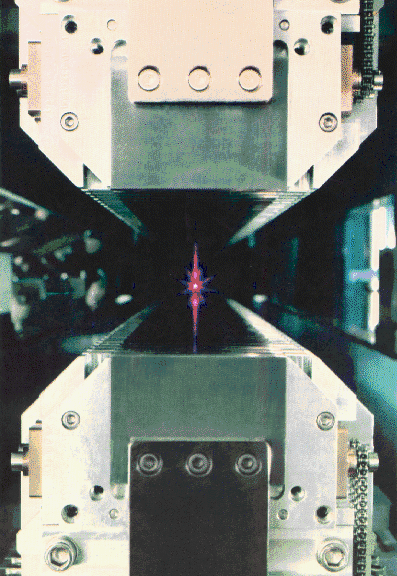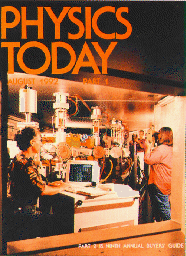
Commissioning of the ALS was accomplished a week ahead of schedule, within the project's $100 million budget, and with a rating of excellent from a panel of final reviewers.
The ALS consists of a high-energy electron storage ring equipped with special magnetic devices that produce x-ray and ultraviolet light and coupled to advanced beamlines and experimental stations. The facility's project plan called for 50 milliamps of electron-beam current in the storage ring by March 31, 1993. The ALS passed that mark on March 24 when it reached 65 milliamps, and has now exceeded its design goal of 400 milliamps.
Secretary of Energy Hazel O'Leary sent a letter of congratulations to LBL Director Charles V. Shank and the staff at the Laboratory for achieving the beam-current milestone. In the letter, she especially praised physicists Jay Marx and Brian Kincaid who oversaw the construction of the Light Source.
Underneath the dome of the ALS -- the same structure that crowned the 184-inch cyclotron built by LBL founder Ernest O. Lawrence during World War II -- is a complex of electron accelerators and a state-of-the-art electron storage ring that is 200 meters in circumference.
An electron beam that has been accelerated to 1.5 billion electron volts circulates in the storage ring for several hours, guided and focused by hundreds of precision electromagnets. Undulator and wiggler magnetic "insertion" devices that are also in the ring produce synchrotron radiation at the soft x-ray and extreme ultraviolet wavelengths.
Installation of the storage ring was completed in December of 1992. Electrons were injected into it less than a month later and allowed to coast around it. Two months later, on March 16, 1993, when the radio-frequency power system began operating, an electron beam was stored in the ring for the first time. The beam made millions of turns, reaching a current of 6 milliamps. Little more than a week later, the current surpassed the requirement for project completion and by the first week in April had climbed to 407 milliamps. The ALS is scheduled to begin operating in fall, 1993. It will be open to qualified scientists and engineers from throughout the United States.
